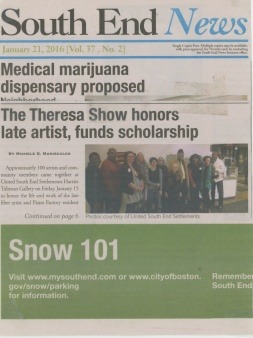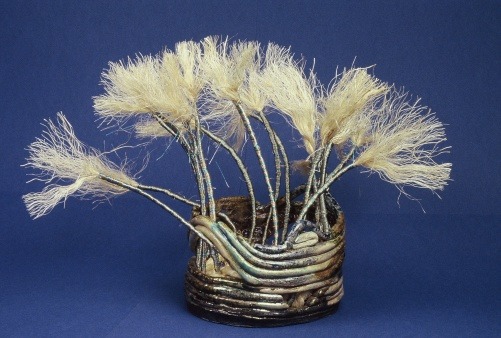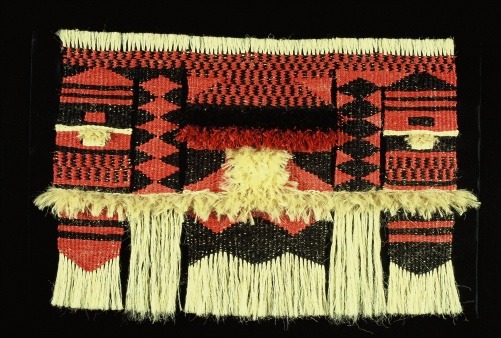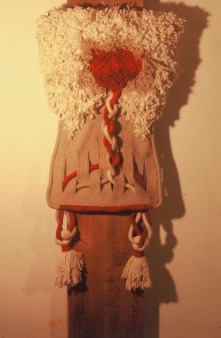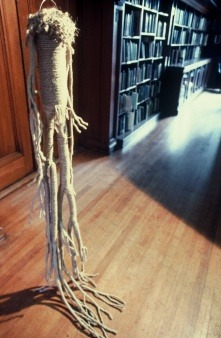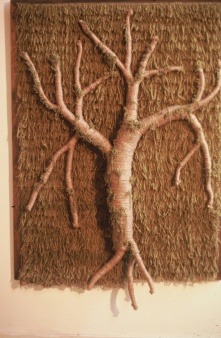Theresa-India Young Scholarship Committee
Our Purpose
Our committee established, in 2013, the Theresa-India Young Scholarship in the Fibers Dept. at Massachusetts College of Art and Design (MassArt) to actualize Theresa’s dying wish – that weaving remain a permanent marker in the fibers field of study. Theresa recognized that weaving, as an art form and cultural identify using natural fibers, would gradually demise if not brought to the forefront in an educational arena through an endowed scholarship. Her work as a master weaver/teacher of Backstrap, European Tapestry, Ikat, Kente, and Navaho weavings provided her the opportunity to closely scrutinize the fibers arena thru careful study of current practices, attitudes, and technological practices. Through her teachings and examples, she utilized and instilled into her students and the public the respect that world cultures held around basic skills that served as a livelihood, and the use of nature and its products. Theresa sought out and used natural fibers and materials in her artistic creations and stressed their use while teaching at the Museum of Fine Arts, Boston, Wheelock College, and MassArt. She was quite adamant that her students learn and appreciate the values various world cultures placed on the gifts of nature. These ideals formed the foundation for students to tread lightly upon the earth in the continuation and harmony of artistic techniques that Theresa explored, developed, and perfected. Theresa viewed herself as a weaving griot. Her goal was to pass on the African-American traditional coil basketry patterns brought to the coastal Southeast by slaves made from sweet grass, palmetto and pine needles. She learned these from her grandmother who had learned them from Theresa’s great-Aunt India Shanklin who had studied under Booker T. Washington. Theresa worked with these ancestral traditional materials and techniques of coiling, plaiting, twining, and macramé but always looked for new ways of expressing finger-weaving and loom weaving with natural fibers such as sisal, raffia, and jute. She frequently used flat reed and seagrass rope in her fibers workshop at schools and at the MFA, Boston where she taught for 20 years. Theresa did in-depth study on all materials and their care before she embarked upon their use in her creative process. She additionally completed major research on natural dyes at Boston’s Horticultural Hall where she also taught weaving classes and displayed her nature inspired fiber art. Knowledge of the properties of such natural dyes as madder root, oak galls, chamomile, indiego and how they interact with natural fibers also laid the foundation for her to become more adept at rug restoration and conservation. This understanding of the properties of dyes, weaving techniques, colored cotton, along with astute knowledge of fibers led to her opening up a rug repair business. Old House Journal, in 2003, shared some of her expertise with their readers. Theresa bequeathed her immense fibers research library of 195 books, 117 periodicals, 7 exhibition catalogs and 10 videocassettes to the MassArt Library collection. This included numerous books on basket and papermaking, natural materials, dyeing, weaving, and other techniques and practices related to creating permanent works of fibers arts for perpetual enjoyment and study. One of our major goals is to make Theresa’s papers available to scholars, researchers, fiber artists and the public thru the Massachusetts State Archives University Archives and Special Collections in the Joseph P. Healey Library at the University of Massachusetts Boston. They have categorized 35 boxes of her papers, which we must sort. An additional 25 boxes must be placed in these categories and sorted. We are in the process of arranging for volunteers to help with this project. We, additionally, wish to convene a panel on Theresa’s oeuvre/scholarship at a textile conference in 2018 to fully and widely disseminate her motivation, creative process, and methods for use of natural fibers, dyes, traditional practices, and explore her intense relationship with natural elements and how she imparted this to students. I will write a book about Theresa, as I have done the research, have all the files, images, video footage from the Memorial Tribute and a tour of her Sketches of Ghana show, as well as original pieces of art. I carry sole responsibility for ensuring that Theresa receives the acclaim due her for professionalism in the areas of weaving, ceramics, Egyptian history, and multicultural education. An additional goal is to work with the Suffolk County Conservation District, over time, in an experimental opportunity to grow some of the various plants used to make natural dyes. This would introduce teens in a way so that they understand, in totality, that life systems start with the earth. The teens could then develop a small business marketing these plants to fiber artists. This hands-on experience helps to fulfill the legislated mission of conservation of natural resources by growing these plants.
